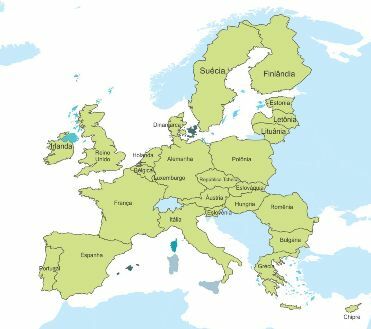The Union of South American Nations also known as UNASUR, which some time ago was called the Community South American of Nations, corresponds to an economic integration that aims to create an extensive area of free business.
This aims to integrate two economic blocs, MERCOSUR and the Andean Community of Nations (CAN), with characteristics similar to the European Union, its nomination was constituted from the declaration of Cuzco in Peru, carried out in the year of 2004.
The headquarters of this institution is located in Quito and the bank, in Venezuela, called Banco do Sul.
The first meeting of this institution took place on September 29 and 30, 2005, in Brazil. The following year the second meeting took place, this time in the Bolivian city of Cochabamba, on December 8, 2006. In 2007, it was Colombia's turn to host the event, in the city of Cartagena de Indias. However, one of the most important meetings took place on May 23, 2008, in Brasília, where political representatives from the 12 countries of the Americas South signed a document formalizing the creation of UNASUR, which will enter into force after the treaty is ratified by at least nine members of the block.
One of the proposals for implantation in the Union through the Banco do Sul is the creation of a single currency to circulate among member countries, this idea was welcomed by the political environment of the Latin America, like the president of Peru, Alan García, and that of Bolivia, Evo Morales, the proposed name for such currency is “Pacha”, although it is not definitive and is open to suggestions from the countries members.
Do not stop now... There's more after the advertising ;)
Another intention of the group is to establish a common market with free movement of goods and people, in this sense, anyone can stay in any member country for a period of 90 days, only with the presentation of the identification document of their respective country of origin. In 2006, countries such as Brazil, Argentina, Bolivia, Chile, Colombia, Ecuador, Guyana, Paraguay, Peru, Suriname, Uruguay and Venezuela stopped requiring tourist visas by member nations.
This regional integration is viable based on the assumption that it will offer conditions to establish a solid market, making the members more homogeneous economically, which would facilitate the possibility of reaching important partners such as the European Union and East Asia and, above all, to prevent the implementation of the FTAA.
Unasur data:
- Territorial extension: 17,715,335 km².
- Population: 382.43 million inhabitants.
- GDP (Gross Domestic Product): US$3.9 trillion.
- GDP per capita: US$ 10,378.
Eduardo de Freitas
Graduated in Geography
Brazil School Team
Economic blocks - geography - Brazil School
Would you like to reference this text in a school or academic work? Look:
FRANCISCO, Wagner de Cerqueira e. "South American Community of Nations"; Brazil School. Available in: https://brasilescola.uol.com.br/geografia/comunidade-sul-americana-de-nacoes.htm. Accessed on June 28, 2021.


